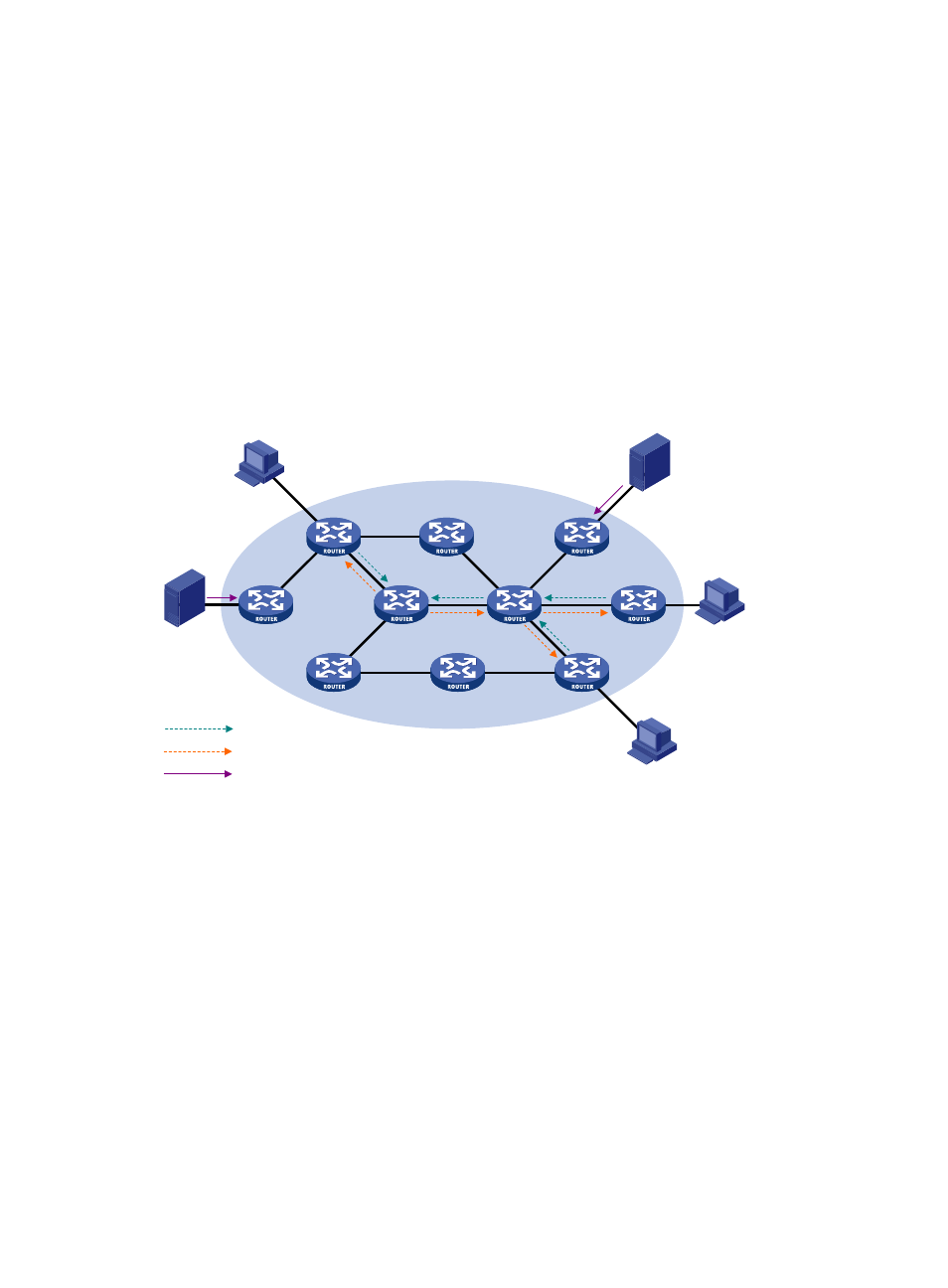Bidirectional rpt building – H3C Technologies H3C S10500 Series Switches User Manual
Page 152

137
1.
Router B and Router C multicast DF election messages to all PIM routers (224.0.0.13). The election
messages carry the RP’s address, and the priority and metric of the unicast route, MBGP route, or
multicast static route to the RP.
2.
The router with a route of the highest priority becomes the DF.
3.
In the case of a tie, the router with the route with the lowest metric wins the DF election.
4.
In the case of a tie in the metric, the router with the highest IP address wins.
Bidirectional RPT building
A bidirectional RPT comprises a receiver-side RPT and a source-side RPT. The receiver-side RPT is rooted
at the RP and takes the routers directly connected to the receivers as leaves. The source-side RPT is also
rooted at the RP but takes the routers directly connected to the sources as leaves. The processes for
building these two parts are different.
Figure 47 RPT building at the receiver side
Source
Server A
Server B
Host B
Host C
Receiver
Receiver
Multicast packets
Receiver-side RPT
Join message
RP
Source
Host A
Receiver
As shown in
, the process for building a receiver-side RPT is similar to that for building an RPT
in PIM-SM:
1.
When a receiver joins multicast group G, it uses an IGMP message to inform the directly
connected router.
2.
After getting the receiver information, the router sends a join message, which is forwarded hop by
hop to the RP of the multicast group.
3.
The routers along the path from the receiver’s directly connected router to the RP form an RPT
branch, and each router on this branch adds a (*, G) entry to its forwarding table. The * means
any multicast source.
When a receiver is no longer interested in the multicast data addressed to multicast group G, the directly
connected router sends a prune message, which goes hop by hop along the reverse direction of the RPT
to the RP. After receiving the prune message, each upstream node deletes the interface connected to the
downstream node from the outgoing interface list and checks whether it has receivers in that multicast
group. If not, the router continues to forward the prune message to its upstream router.
